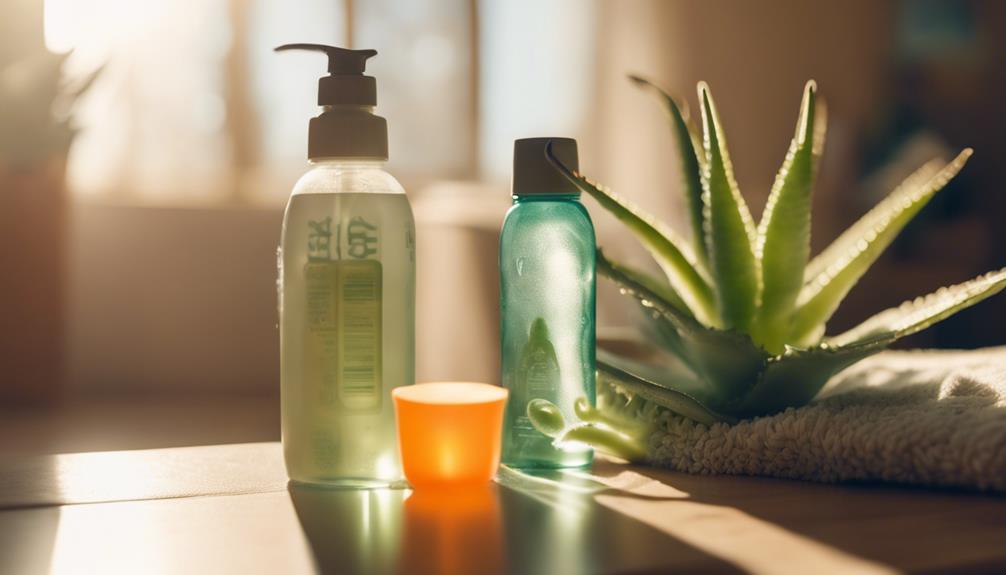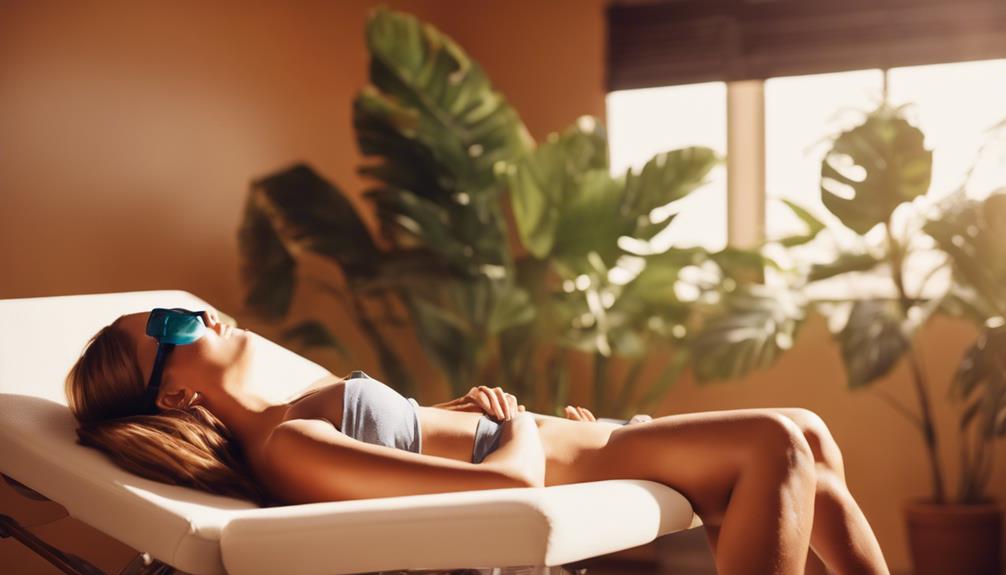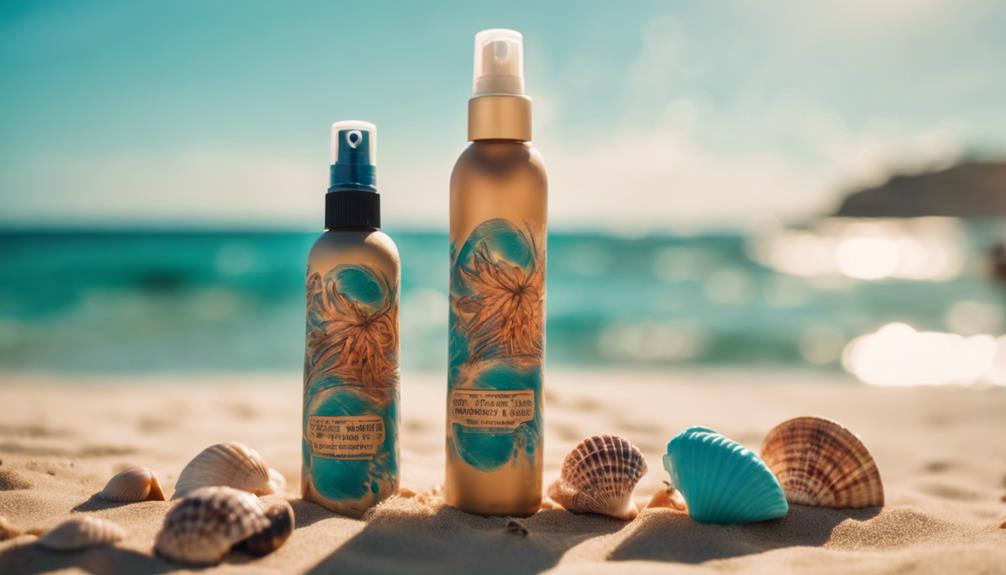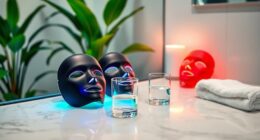To avoid tanning bed burns, start by knowing your skin type. Fair skin burns easily; darker skin can handle longer sessions. Begin with short sessions of 5-10 minutes and gradually increase as your skin adjusts. Always use high-quality tanning products that hydrate your skin, and protect sensitive areas with special gear and SPF. Don't forget to stay hydrated and follow a good skin care routine before and after tanning. Keep an eye out for signs of burns, like redness or itching, and adjust your tanning frequency accordingly. There's much more to discover about safe tanning practices that can help you enjoy the sun.
Key Takeaways
- Start with short tanning sessions of 5-10 minutes and gradually increase exposure time as your skin adjusts.
- Always use a broad-spectrum SPF 30 sunscreen before tanning to protect your skin from UV damage.
- Stay hydrated by drinking plenty of water and moisturize your skin before and after tanning to enhance resilience.
- Wear UV protective gear, including goggles and specialized face protection, to safeguard delicate skin areas during tanning.
Understanding Your Skin Type
Before hitting the tanning bed, it's important to understand your skin type and sensitivity to guarantee a safe and effective tanning experience.
Start by identifying your skin type—whether it's fair, medium, or dark—as this will determine how your skin reacts to UV exposure. If you've got fair skin, you might burn easily, while darker skin may require longer exposure.
Consider how your skin reacts to sunlight; this will guide your tanning bed sessions. Consulting a dermatologist can provide personalized insights.
Additionally, conduct a patch test to see how your skin responds to UV rays before committing to longer sessions.
Tailoring your approach based on your skin type guarantees a safer, more enjoyable tanning experience overall.
Safe Tanning Practices
Starting with minimal exposure and gradually increasing your tanning time is vital for avoiding burns in the tanning bed.
Begin with short sessions of about five to ten minutes, and pay attention to your skin's response. Follow the salon's guidelines for recommended exposure times based on your skin type.
As your skin adjusts, you can slowly extend your sessions, but don't rush the process. Monitor your tanning frequency and be aware of any signs of sensitivity or irritation, such as redness or itchiness.
It's important to be patient; a gradual approach guarantees a safer tanning experience and helps you achieve that desired glow without risking burns. Always listen to your body and adjust accordingly.
Choosing Quality Tanning Products

Choosing the right tanning products is essential for achieving a safe and effective tan while minimizing the risk of burns. Quality lotions can make a significant difference in your tanning experience. Look for products with hydrating and protective ingredients to nourish your skin.
Here are a few key points to reflect on when selecting your tanning products:
- Choose lotions with aloe vera, shea butter, or coconut oil for hydration.
- Opt for products with high SPF to protect your skin during tanning.
Protective Measures During Tanning
Always wear UV protective gear, like goggles, to shield your eyes from harmful rays while tanning.
Protect your skin by using specialized face protection for delicate areas, ensuring you minimize exposure to intense UV light.
Consider wearing UV protective clothing that covers exposed skin, reducing the risk of burns.
Don't forget to apply SPF lip balm to keep your lips safe from sun damage.
If you're using a tanning bed, check that it has appropriate safety features and follow the salon's guidelines.
Monitor your tanning time closely, starting with shorter sessions to gauge your skin's response.
Skin Care Before and After
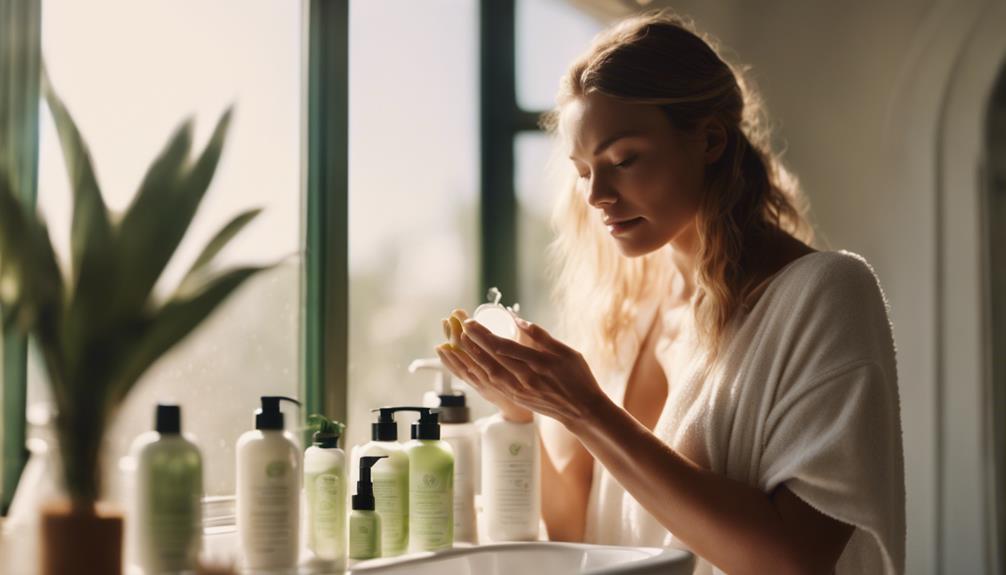
Hydrating and nourishing your skin before and after tanning is essential for achieving ideal results and minimizing the risk of burns. Make sure you prepare your skin properly to get the most out of your tanning sessions. Here are some key steps to follow:
- Drink plenty of water: Staying hydrated helps your skin maintain its radiance and resilience.
- Use a broad-spectrum SPF 30 sunscreen: Applying sunscreen before tanning protects your skin from harmful UV rays.
After tanning, continue to moisturize and hydrate to support skin recovery. Following these steps will help you enjoy a beautiful tan while minimizing the risk of burns.
Recognizing Tanning Bed Burns
Recognizing the signs of tanning bed burns early can help you take immediate action and prevent further skin damage.
Look for redness and itchiness, as these are often the first indicators of a potential burn. If you notice swelling or discomfort, applying a cool compress can provide relief.
Be aware that nausea and peeling skin may signal more severe burns, which require medical attention. Regularly monitor your skin after tanning sessions for any unusual changes.
If you experience any of these symptoms, it's essential to limit your tanning exposure and allow your skin to heal. Taking these steps can help you enjoy tanning while minimizing the risk of burns and maintaining healthy skin.
Common Tanning Concerns
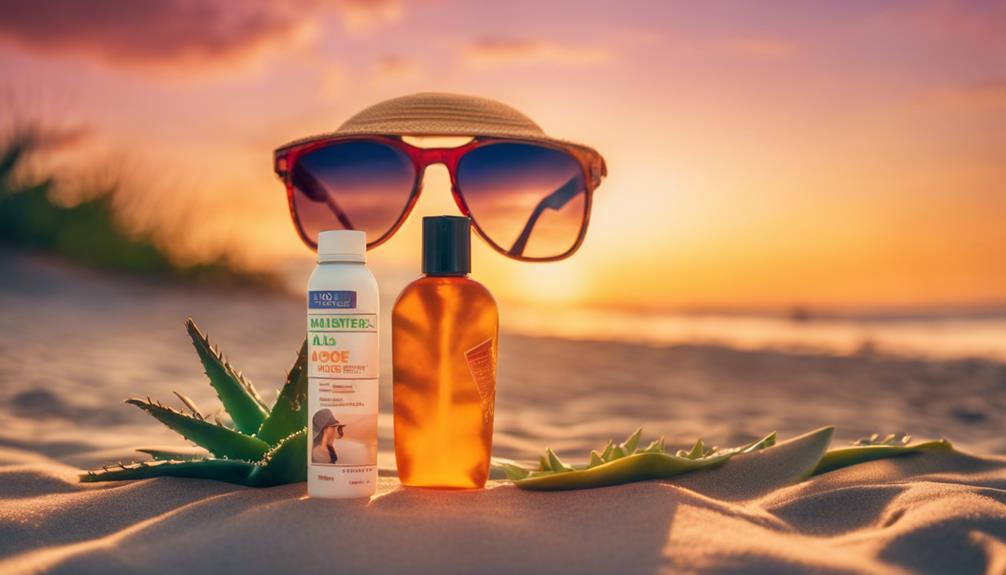
While many people enjoy tanning for a sun-kissed glow, several common concerns can arise that you should address to guarantee a safe and effective experience.
Here are some key points to take into account:
- Skin Type: Know your skin type and sensitivity to tailor your tanning sessions and avoid burns.
- Exposure Duration: Gradually increase your tanning bed exposure; start with shorter sessions to minimize risk.
Frequently Asked Questions
How Often Should I Use a Tanning Bed Safely?
You should use a tanning bed no more than 2-3 times a week, gradually increasing exposure time. Always pay attention to your skin's reaction and adjust sessions based on sensitivity to avoid burns.
Can I Tan if I Have Sensitive Skin?
If you're feeling like a delicate flower, you can still tan with sensitive skin by starting slow. Just remember to monitor your reactions, use quality products, and consult a dermatologist for tailored advice.
What Are the Signs of an Allergic Reaction to Tanning Products?
If you notice redness, itching, swelling, or blistering after using tanning products, you might be experiencing an allergic reaction. Stop using the product immediately and consult a healthcare professional for advice on treatment options.
Is It Safe to Tan During Pregnancy?
Imagine warm sunbeams kissing your skin; while it's tempting, tanning during pregnancy might not be safe. Your body's sensitivity increases, so it's best to consult your doctor before exposing yourself to UV rays.
How Do Indoor Tanning Beds Differ From Outdoor Tanning?
Indoor tanning beds use controlled UV light, allowing you to tan regardless of weather. Outdoor tanning relies on natural sunlight, which varies in intensity. You'll often experience quicker results with indoor beds, but precautions are essential.
Conclusion
As you step into the world of tanning, think of your skin as a precious canvas waiting for that sun-kissed glow.
By understanding your skin type, practicing safe tanning, and using quality products, you can paint a beautiful picture without the harsh strokes of burns.
Remember, your journey to a radiant tan is a careful dance—move gracefully, listen to your body, and embrace each sunbeam with confidence.
Enjoy your glow, but always put your skin first!
